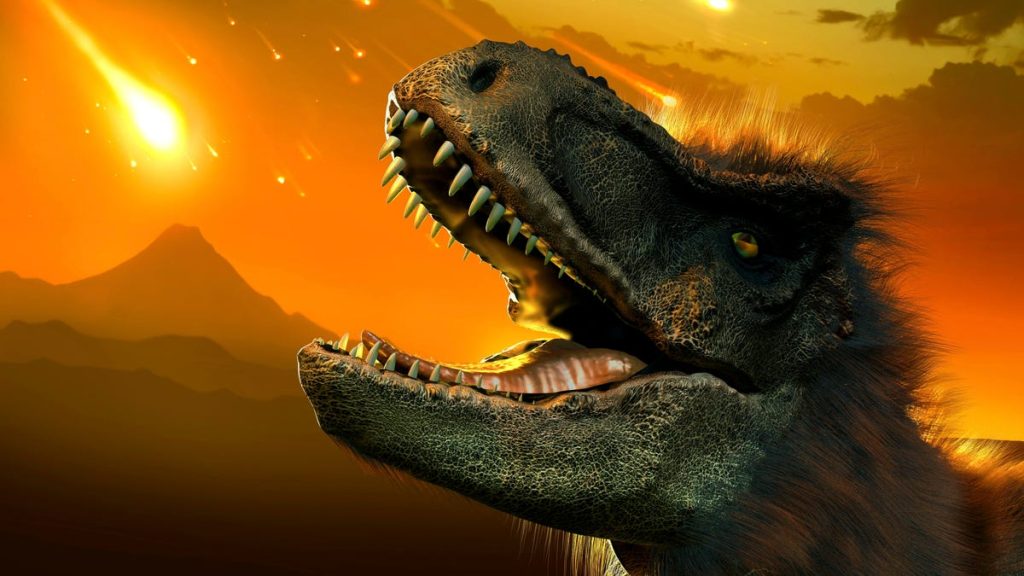The dinosaurs suffered a double blow with two separate asteroid impacts in addition to the one that hit Chicxulub, Mexico, which is credited with killing them. Scientists recently discovered a second impact crater at the Nadir site off the coast of Guinea in western Africa. Led by Uisdean Nicholson, a team of researchers used 3D seismic data to analyze the impact of the asteroid, its size, angle of impact, speed, and the effects on the seabed and underlying rock. The study revealed that the asteroid was 450 to 500 meters in size, traveling at 20 kilometers per second, and hit the Earth at a 20- to 40-degree angle from the northeast.
This discovery sheds new light on the events that took place around 66 million years ago during the end of the Cretaceous period. While the asteroid that struck Chicxulub is known for killing the dinosaurs, it appears that the impact at Nadir crater may have played a significant role as well. The study provided detailed information about the impact of the asteroid, including the displacement of water in the area, formation of tsunamis, sediment vaporization, and the liquefaction of the underlying rock. The impact also caused ionospheric disturbances, thermal radiation, and massive landslides as parts of the seafloor plateau crashed into the ocean.
The impact of the asteroid at the Nadir crater was incredibly violent, causing widespread devastation across the area. The study reconstructed the blow-by-blow result of the impact, showing the sequence of events that followed the asteroid’s collision with Earth. Tsunamis generated by the impact traveled far into the Atlantic Ocean, while sediment rushed in to fill the newly formed hole, creating a brim. The resulting earthquakes caused damage below the seabed, leading to further destruction and chaos. The study highlighted the catastrophic effects of such an impact and emphasized the rarity of such events.
While events like the asteroid impacts that led to the extinction of the dinosaurs are extremely rare, scientists remain vigilant about potential future threats. The largest meteor impact in living memory was the “super bolide” asteroid that exploded over Russia in 2013. The odds of a similar impact happening in the future are low, with the chance of Bennu, a potentially dangerous asteroid, hitting Earth around the year 2300 being estimated at about one in 1,750. The study serves as a reminder of the forces of nature and the importance of understanding and preparing for potential asteroid impacts in the future.


